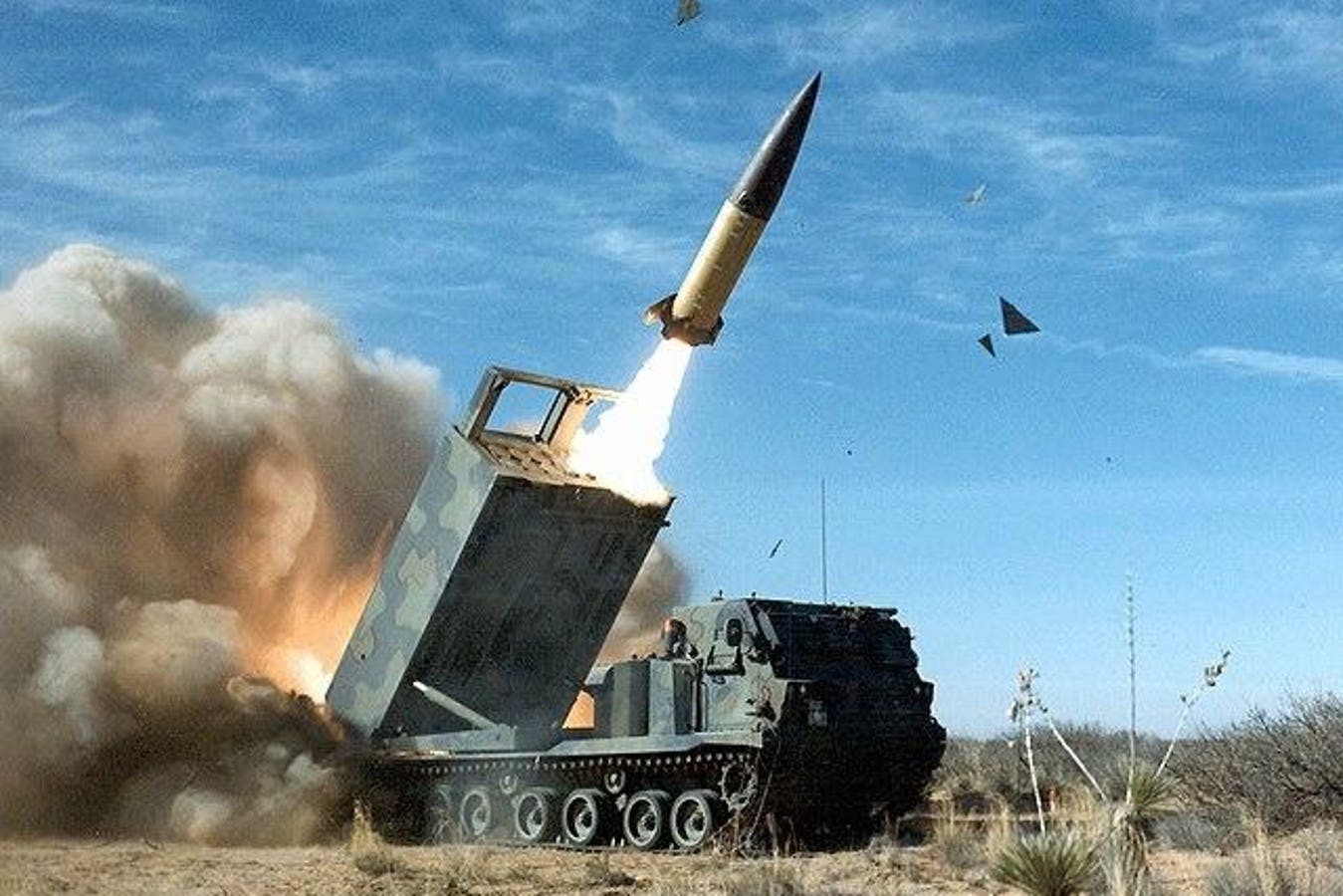After months of lobbying by Ukrainian officials, the administration of U.S. president Joe Biden finally shipped M39 Army Tactical Missile Systems to Ukraine. And the Ukrainians promptly fired three of the two-ton missiles at a Russian helicopter base in Berdyansk, in occupied southern Ukraine.
The inertially-guided ballistic missiles streaked right through Russia’s frayed air-defense umbrella and, as they neared the ground, scattered a thousand grenade-size submunitions apiece across the Berdyansk airfield’s aprons, reportedly destroying at least nine Russian helicopters.
It was “one of the most serious strikes of all time” in Russia’s 21-month wider war on Ukraine, according to Fighterbomber, a popular Russian Telegram channel. And the ATACMS threat could get a lot worse for the Russians if the Biden Administration complements the 30-year-old M39 missiles with newer M39A1s and M48s.
The U.S. Army is sitting on hundreds of M39A1s and M57s whose rocket motors are expired or nearly expired, and which the Army could give away after a quick inspection—all without jeopardizing its own ability to fight a major war with its roughly 1,000 unexpired ATACMS missiles.
The M39 version of the ATACMS is guided by a set of laser gyros that constantly determine the missile’s position, and correct its course, by calculating how fast it’s going—and in what direction relative to its launch position.
Inertial navigation is reasonably accurate. Certainly accurate enough for Ukraine’s 60 or so tracked M-270 and wheeled High-Mobility Artillery Rocket System launchers to hit an airfield from 50 miles away. That’s the distance between Berdyansk and the front line in southern Ukraine.
But the M39A1 version of the ATACMS missile is even more accurate. It adds GPS guidance to the inertial guidance to give the munition a circular error probability of around 30 feet, meaning most missiles are likely to land within 30 feet of their target.
The M48 version replaces the M39A1’s 950 submunitions with a single 500-pound penetrating warhead. Where the M39 is an area weapon, optimized for knocking out large numbers of unarmored targets, the M48 is a bunker-buster, building-smasher and ship-killer. It actually shares its warhead design with the U.S. Navy’s Harpoon anti-ship missile.
When the Ukrainian air force targeted a Russian submarine in its drydock in Sevastopol, in occupied Crimea last month, it used British-made Storm Shadow cruise missiles with similar penetrating warheads. The effect was devastating. The cruise missiles punched through the sub’s steel hull then exploded inside the vessel like firecrackers inside an egg.
With M39s, the Ukrainians can target big unprotected targets: airfields, ammo dumps, supply depots, vehicle repair yards, et cetera. With M39A1s, they could target smaller unprotected targets: command posts, for instance. With M48s, they could demolish small protected targets such as underground bunkers … and bridges.
Indeed, bridges might be the most valuable targets on the target list if and when Ukraine gets M48s. Russian supply lines across southern Ukraine cross several important bridges, most notably the Kerch Bridge connecting Russia proper to the Crimean Peninsula.
Ukrainian forces dropped a section of the Kerch Bridge back in July, reportedly by sailing an explosives-laden drone boat underneath the span. The attack squeezed Russian logistics in Crimea, but only temporarily: the bridge fully reopened last week.
The Ukrainians already have several munitions that can strike the bridge. In addition to the robot boats, these include Storm Shadow and SCALP-EG cruise missiles and S-200 ballistic missiles. M48s would expand Kyiv’s options, and might make a second major attack on the bridge more likely.
It might be a tough operation for the Ukrainian army’s rocket batteries, however. The M48 boasts a 186-mile range, which is nearly double the range of an M39. But it’s 150 miles from the front line to the Kerch Bridge, so the batteries would have to move close to the front—and risk detection and counterbattery fire.
That’s all conjecture, of course. There’s no evidence the White House already has sent M39A1s or M48s, or plans to do so in the near future. It took Ukrainian diplomats a year of pleading to convince the Biden Administration to send M39s; who knows what it’ll take to free up the M39A1s and M48s.
Read the full article here





